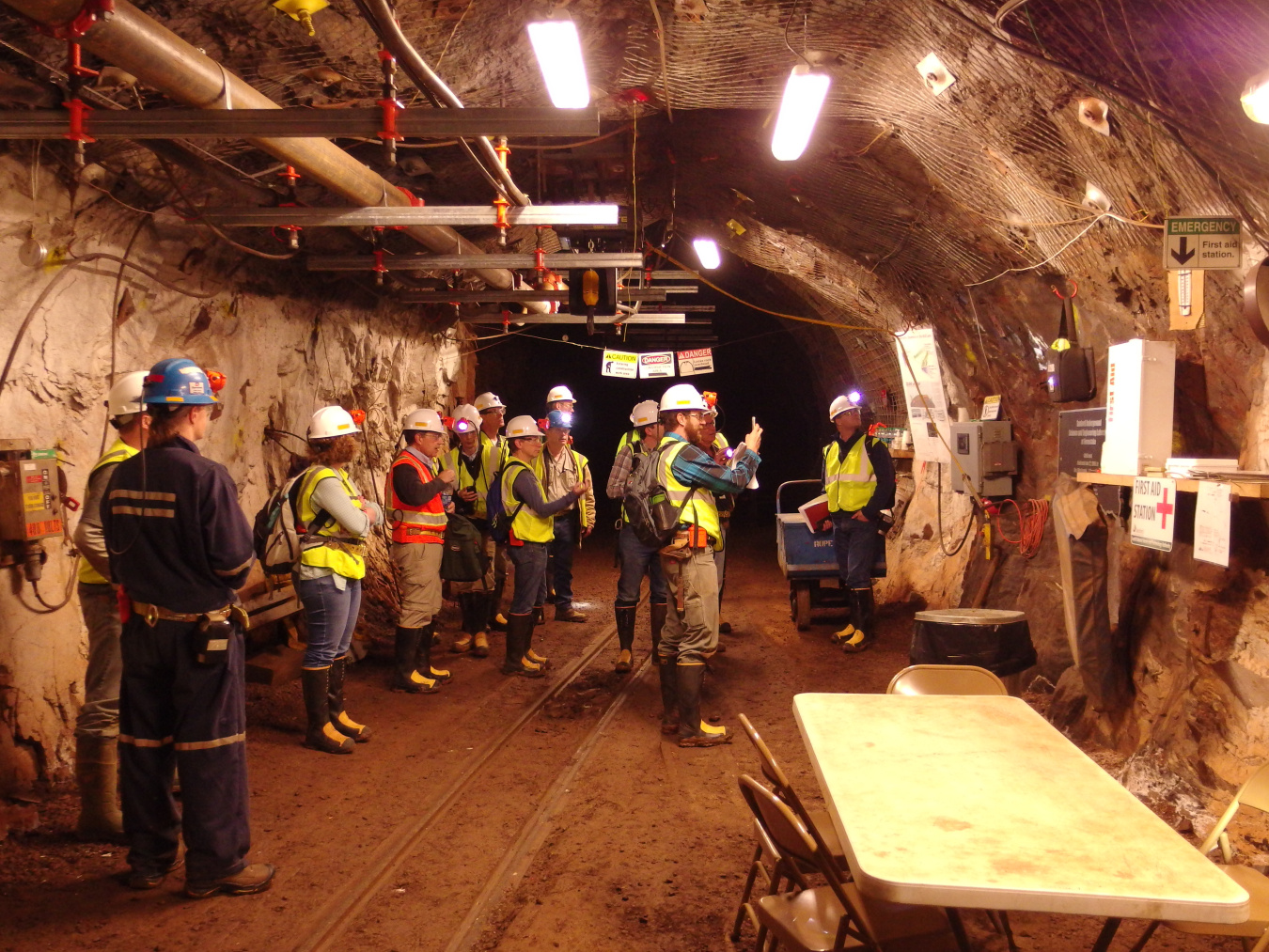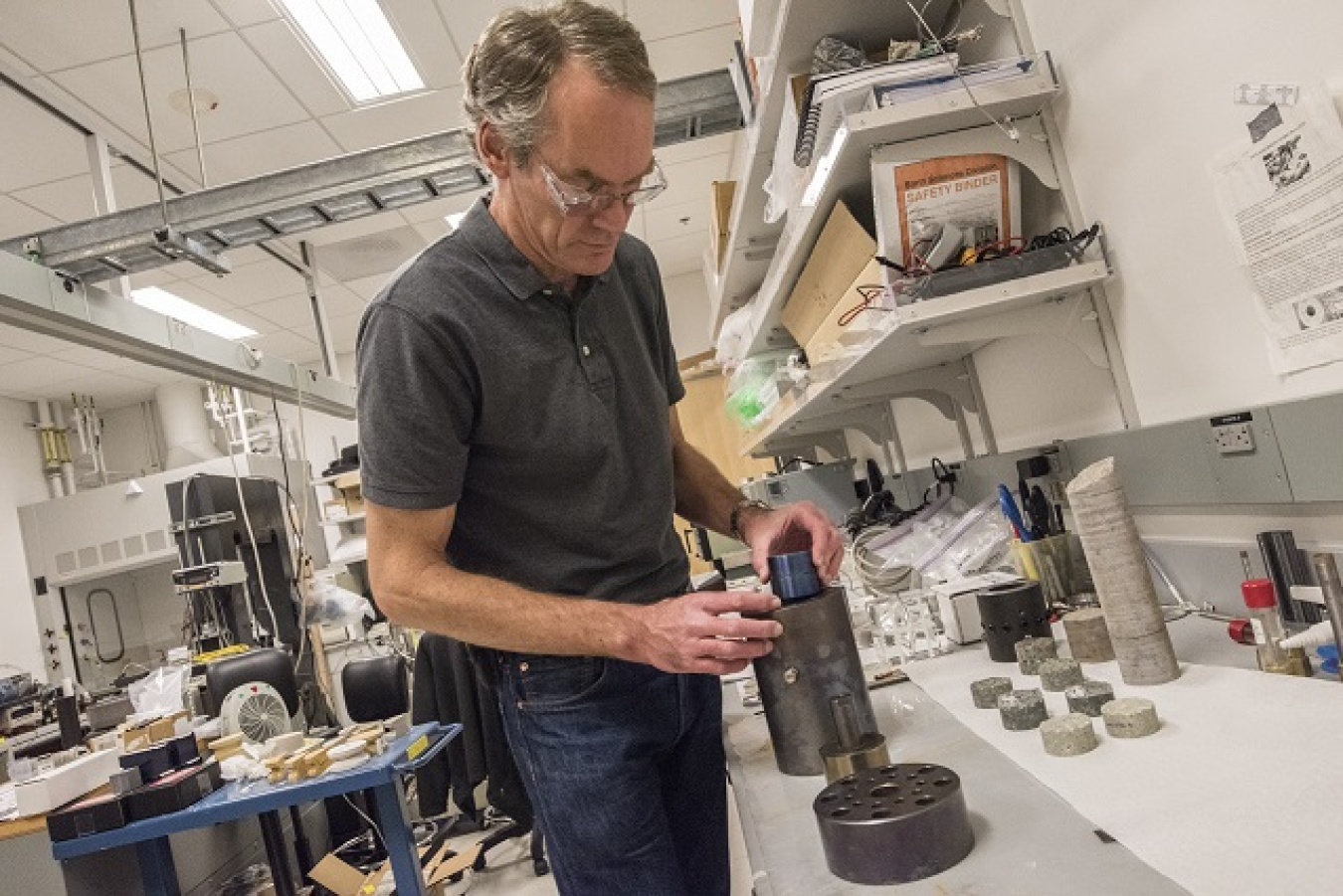Tim Kneafsey, PI for the EGS Collab effort (now retired), conducts tests on rock core in his lab at the Lawrence Berkeley National Laboratory (LBNL). Source: LBNL.
. . . . .
In early 2017, the Department of Energy’s Geothermal Technologies Office (GTO) funded national laboratories to focus on GTO’s vision for transformational enhanced geothermal systems (EGS). GTO’s objective was to establish a collaborative experimental and model comparison initiative: the EGS Collab.
The EGS Collab’s focus is to test and verify computational models that could be used in EGS work broadly or at GTO’s Frontier Observatory for Research in Geothermal Energy (FORGE) EGS field laboratory. The EGS Collab team comprises eight national laboratories, six universities, and industrial partners.
The EGS Collab is a small-scale field site where the subsurface modeling and research community can conduct controlled, small-scale, in-situ experiments focused on rock fracture behavior and permeability enhancement. The EGS Collab provides the opportunity for reservoir model prediction and validation, in coordination with in-depth analysis of geophysical and other fracture characterization data. The goal is to understand the basic relationship among stress, seismicity, and permeability enhancement. Identifying and quantifying other parameters impacting permeability, as well as understanding how these parameters change throughout EGS development, is also critical to achieving the commercial viability of EGS.
Learn more about how EGS Collab researchers are validating and verifying models of enhanced geothermal reservoir behavior within the Sanford Underground Research Facility (SURF) in South Dakota by watching the EGS Collab video.
The complete datasets are publicly available.
The EGS Collab acts as the bridge between laboratory-scale stimulation/rock mechanics studies and the large-field scale of the FORGE site in Milford, Utah. The project addresses fundamental barriers to EGS advancement by facilitating direct collaboration among the geothermal reservoir modeling community, experimentalists, and geophysicists in developing and implementing well-field characterization and development, monitoring, and stimulation methods.

The EGS Collab Team visits the Sanford Underground Research Facility at Homestake Mine in South Dakota.
Source: Mark White, Pacific Northwest National Laboratory.
Collab Experiment 1 examined hydraulic fracturing in an underground test bed at SURF in Lead, South Dakota, at a depth of approximately 1.5 km. The team installed geophysical monitoring instrumentation in six of eight sub-horizontal boreholes in a well-characterized phyllite with many sensor types to allow careful monitoring of stimulation events and flow tests. The team also instrumented the other two boreholes to perform and carefully measure water injection and production. Collab researchers performed many near-real-time simulations in conjunction with the field experiments, with more detailed simulations performed on a longer timeframe. Data from these tests are available on the Geothermal Data Repository (GDR).
Collab Experiment 2 is examining hydraulic shearing in a new test bed at SURF, at a depth of about 1.25 km. The Experiment 2 bed is in amphibolite and contains a different set of stress and fracture conditions than Experiment 1. The team has completed a testbed consisting of nine instrumented boreholes—one for injection, four with grouted instrumentation, and the remaining four adaptively used for production and monitoring. The team is using two boreholes drilled earlier for characterization. The testbed construction optimized encounters with approximately five fracture-set orientations, and stimulations, including modified stimulations for the future Experiment 3, are under way in preparation for flow tests.


